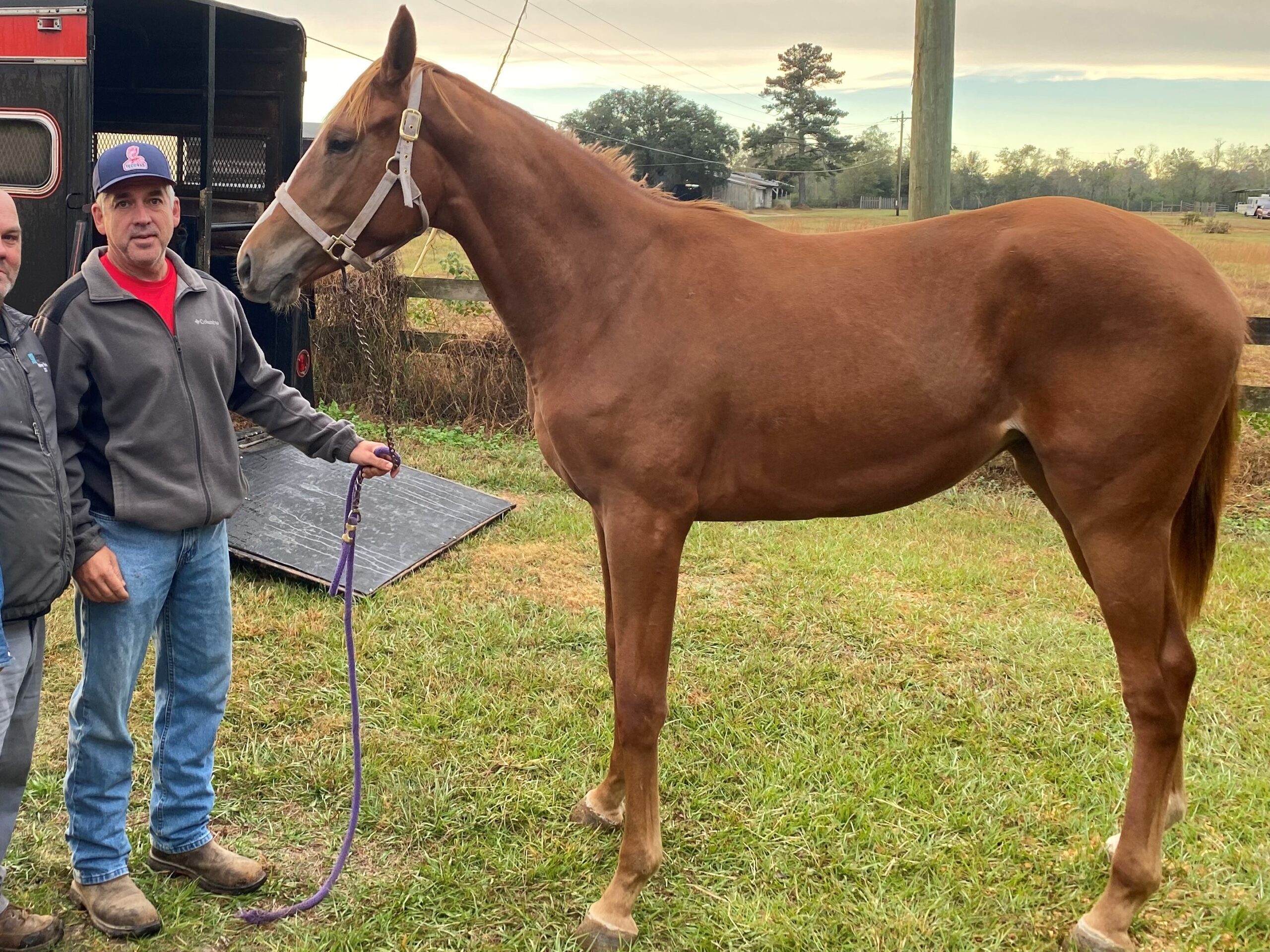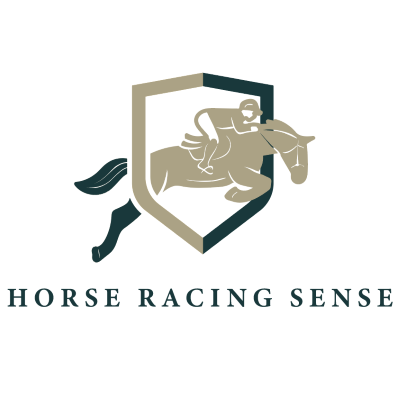Last updated: July 7, 2025
Any links on this page that lead to products on Amazon are affiliate links and I earn a commission if you make a purchase. Thanks in advance – I really appreciate it!
Horses communicate through a subtle language of body movements and expressions. Understanding horse body language is essential for horse owners, trainers, and enthusiasts to ensure the horse’s well-being, recognize signs of discomfort, and deepen their connection.
As a long-time horse owner with seven horses currently in race training, I’ve encountered and addressed many behavioral issues, which has deepened my understanding of equine communication. This guide provides insights into common behaviors, signs of stress, and calming signals, with real-life examples to illustrate these subtle cues.

Common Horse Behaviors
A horse’s body language and cues convey their emotions and responses to their environment. Observing these behaviors in context is crucial; for example, pinned ears often signal aggression, but they can also mean pain or intense focus.
- Ears:
- Forward Ears: Indicate alertness and curiosity. For instance, one of my young horses pricks his ears forward every time he spots another horse, showing he’s eager and curious.
- Pinned Back Ears: Typically signal discomfort or anger. I’ve seen this when a horse feels pressured during training, though it’s also common in more dominant horses. Observing other cues helps determine if it’s discomfort or focus.
- Swiveling Ears: Signify attentiveness or uncertainty. When one of my racehorses picks up new sounds, their ears swivel, showing they’re attuned to changes in their surroundings.
- Tail:
- Swishing Tail: This often conveys irritation. I noticed this when a mare became impatient during a grooming session; she began swishing her tail, which signaled her growing discomfort.
- Clamped Down Tail: Signals fear or submission. When we introduced a new horse to the paddock, he clamped down his tail as he cautiously approached the other horses, indicating he was wary of his new surroundings.
- Raised Tail: Commonly seen in play or excitement, especially with younger horses. My two-year-old Thoroughbreds often raise their tails when turned out, racing each other and showing youthful exuberance.
- Facial Expressions:
- Flared Nostrils: This can indicate excitement or fear. One of my horses, for example, flares his nostrils when he sees a bucket of feed or when he spots something unfamiliar on the track.
- Soft Eyes and Relaxed Mouth: Show calmness and comfort, such as when my horses are groomed after a race. They lower their heads, relax their lips, and half-close their eyes.
- Tense Mouth or Wrinkled Nose: Sign of stress or discomfort. One of my horses wrinkles his nose during vet checkups, a subtle sign that he’s feeling tense.
For a more detailed understanding, refer to the Basics of Equine Behavior by Extension Horses.

Identifying Signs of Pain, Fear, or Aggression
Interpreting horse cues related to pain, fear, or aggression is essential for managing health and ensuring safety.
- Pain Indicators:
- Restlessness or Pawing: A horse that paws at the ground, like one of mine when it had colic, can signal stomach pain.
- Unwillingness to Move: Lameness or stiffness may show as a reluctance to walk. I once observed this in a horse with joint pain who hesitated to leave his stall until the pain was managed.
- Loss of Appetite or Weight Shifting: I noticed one horse shifting his weight constantly, which turned out to be a response to a hoof issue that was painful to bear weight on.
- Fear Indicators:
- Wide Eyes (with Visible Whites): Often indicates fear, like when one of my young horses saw a new training device. His wide eyes and snorting showed he was wary.
- High Head Position and Trembling: A Sign of high alertness. One of my horses exhibited this when encountering a large group of people at a track event for the first time.
- Hiding Behind Objects or Other Horses: In the paddock, I’ve seen a young, lower-ranking horse seek cover behind others when a more dominant horse approaches.
- Aggression Indicators:
- Pinned Ears and Bared Teeth: Pinned ears and bare teeth are a clear warning. I’ve observed this in more dominant horses when new horses are introduced, showing they are asserting territory.
- Lunging, Kicking, or Biting: All three indicate strong irritation, which I’ve seen when two horses are turned out together but don’t get along.
- Stomping Feet: Often a precursor to a more severe reaction. One of my mares stomps when annoyed by persistent horseflies, which can escalate if left unchecked.
For further insights, see Recognizing and Addressing Behavioral Problems by the University of Florida IFAS Extension.

Calming Signals
Horses use calming or subtle body language cues to reduce tension or signal a desire to avoid conflict. Recognizing these signals can improve handling and help prevent escalation. Calming signals, or subtle horse body language cues, show when a horse is trying to de-escalate or avoid conflict.
- Licking and Chewing: Often seen after a stressful event, such as a training session. I notice this in my horses when they relax after mastering a challenging routine.
- Yawning: Sometimes signals relaxation, but it can also indicate stress relief. After a vet visit, one of my horses will yawn repeatedly, a sign he’s letting go of tension.
- Turning Head Away: A way to avoid conflict. I’ve seen this in my more submissive horses, who will turn their heads when approached by a more dominant horse, showing they have no intention of challenging the other.
To learn more about calming signals in horses, refer to Understanding Horse Body Language: The Tail by The Open Sanctuary Project.

Individual Variation in Behavior
Just as people have unique personalities, horses also express themselves in individual ways. Knowing each horse’s baseline behavior is essential for spotting signs of discomfort or stress.
- Personality Traits: Some horses are naturally more expressive or reactive. One of my mares is bold and will approach unfamiliar objects without hesitation, while another is cautious and often hangs back, requiring more time to assess her environment.
- Behavioral Baselines: Knowing what’s “normal” for each horse helps to spot changes that may signal stress or health issues quickly. For instance, one of my horses, which usually enjoys turnout, suddenly became hesitant to leave her stall, which indicated something was wrong.
For additional reading, see The Basics of Equine Behavior by Rutgers University.

How Behavior Relates to Stress Levels
Changes in a horse’s environment, interactions, and routines can contribute to stress. Recognizing these signs is crucial in managing their mental and physical health.
- Yawning or Excessive Sweating: Yawning may indicate relaxation but can also be a sign of stress, especially when paired with other behaviors. Sweating without exertion is often linked to anxiety, which I’ve observed in my horses when exposed to unexpected stimuli.
- Repetitive Behaviors (e.g., Weaving or Stall Walking): These behaviors indicate chronic stress. One of my horses, initially stall-confined, developed a weaving habit that reduced when he had more turnout time.
- Changes in Appetite or Drinking Patterns: Stress can impact a horse’s intake. I’ve noticed that when one of my horses is anxious, he drinks less, affecting his digestion.
For more information, refer to Understanding Horse Body Language by The Open Sanctuary Project.

Unique Challenges and Behaviors in Racehorses
Due to the intense demands of their training and race day experiences, racehorses often exhibit unique body language and behavioral cues. Understanding these unique behaviors can help owners, trainers, and handlers recognize signs of stress or physical strain, which is especially valuable in maintaining the horses’ readiness and well-being.
- Pre-Race Anxiety:
- Signs: Restlessness, pawing, heightened alertness, or excessive sweating are common pre-race indicators. I’ve seen horses begin pacing or head tossing as soon as they arrive at the track, signaling both anticipation and occasional anxiety.
- Managing Pre-Race Nerves: Many handlers find that familiar routines, like walking the horse or applying calming techniques such as companion animals, massage, or music therapy, can help alleviate pre-race nerves. Each horse may respond differently, and establishing these routines often leads to a calmer, more focused performance on race day.
- Signs of Overtraining:
- Physical and Behavioral Cues: Horses under prolonged training stress may show reluctance to work, diminished enthusiasm, or signs of fatigue, such as lagging during warm-ups. One of my horses, for instance, started displaying a noticeable lack of energy and willingness during routine workouts, indicating he needed a break from intense training.
- Preventing Burnout: Recognizing early signs, such as subtle changes in gait or resistance to saddling, helps trainers adjust a horse’s workload before burnout sets in. Preventing burnout is crucial for performance and the horse’s overall welfare. Recognizing and addressing stress in racehorses ensures they are treated ethically and with consideration for their physical and mental well-being.

Frequently Asked Questions about Horse Behavior and Body Language
What does it mean when a horse pins its ears back?
Pinned ears often signal aggression, discomfort, intense focus, or pain. Look for other cues like body posture or facial tension to understand the meaning. (For more details, see “What Does a Horse’s Ears Tell You?“)
How can I tell if my horse is stressed?
Restlessness, yawning, sweating without exertion, and repetitive behaviors (like weaving) can indicate stress. Each horse shows stress differently, so know what’s normal for your horse.
Why does my horse swish its tail?
Tail swishing usually signals irritation or impatience. If it happens often during grooming or handling, your horse might be uncomfortable.
What are calming signals in horses?
Calming signals are subtle behaviors horses use to reduce tension or avoid conflict. Examples include licking and chewing, turning the head away, and yawning.
How can I calm my horse before a show?
Familiar routines, walking in the paddock, and calming techniques (like massage or music) can help ease pre-show nerves. Each horse responds differently, so find what works best.
What behaviors indicate my horse may be in pain?
Restlessness, reluctance to move, pawing, and weight shifting can all be signs of pain. Changes in facial expressions or unwillingness to be groomed can also indicate pain.
Conclusion: Fostering a Strong Connection with Your Horse
Understanding horse behavior and body language in context allows owners to build trust, improve training, and enhance well-being. Recognizing calming signals, respecting individual differences, and recognizing signs of discomfort all help create a positive environment for each horse. As someone who’s experienced these nuances daily, I’ve found that interpreting these signals deepens the connection with my horses and makes for safer, more rewarding interactions.
Whether you’re a seasoned equestrian or new to horses, learning these cues will enhance your relationship and the horse’s quality of life. For additional resources, explore Horse Body Language by Extension Horses.
As a long-time horse owner with over 20 years of experience, I care for seven Thoroughbred racehorses. Over the years, I have managed various behavioral challenges and have developed insights into reading and responding to horses’ subtle body language cues. This understanding has improved training outcomes and strengthened my bond with each horse.
By learning to interpret these subtle signals, you’ll create a more supportive and understanding environment for your horse, strengthening the bond you share.

About the Author: Miles Henry
Lifelong Horseman | Racehorse Owner | Published Author
Miles Henry brings over 25 years of hands-on experience training and owning Thoroughbred racehorses. Raised with Quarter Horses and Appaloosas, he’s spent a lifetime learning from horses—on the track, in the barn, and in the field. Today, he runs a small but successful racing stable in Louisiana and shares real-world insights on HorseRacingSense.com, helping horse owners, fans, and bettors navigate the sport with confidence.
📚 Books: View Miles’s books on Amazon »
🎧 Podcast Guest: Animal Tales Ep. 32 |
YouTube Interview
📩 Newsletter: Sign up for racing tips and horse care advice »
🔗 Follow Miles:
Twitter |
Facebook |
YouTube

